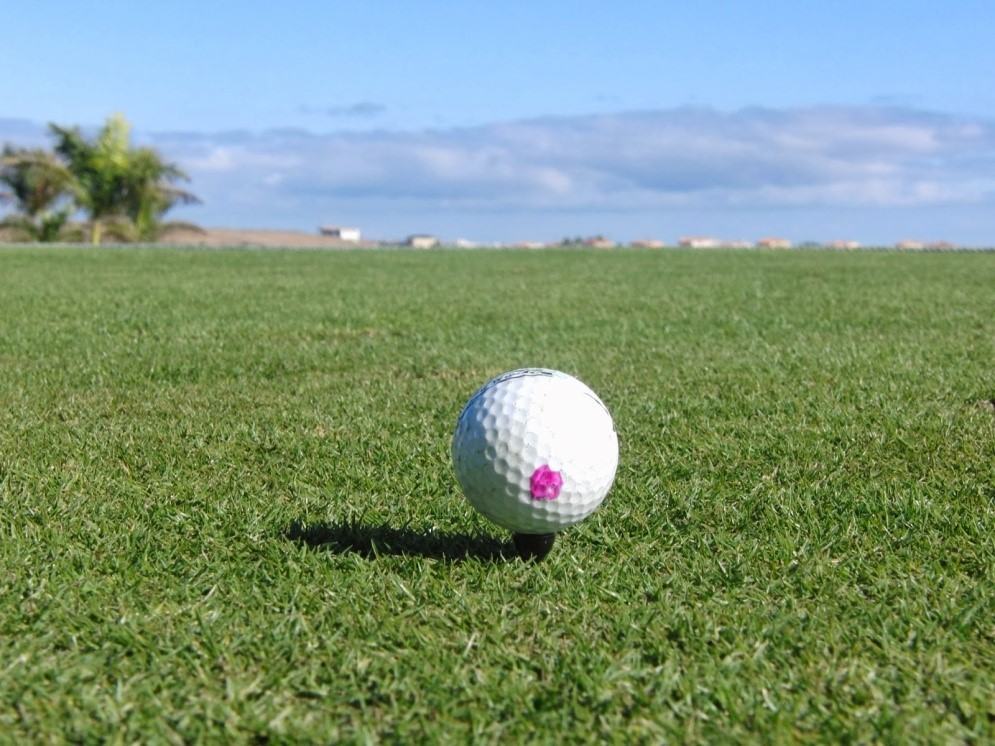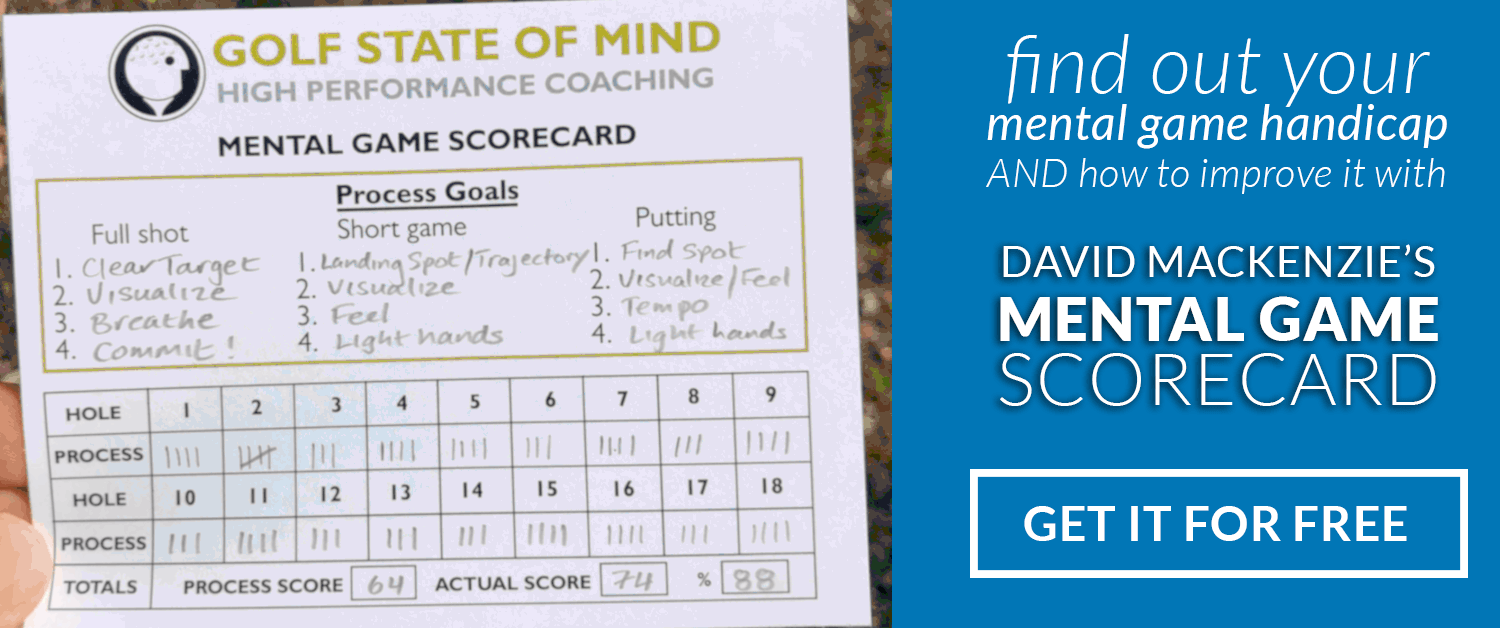
The Tour Player Secret To Better Ball Striking
If you’re like most golfers, in any given round you’ll hit a mixture of thin, fat and off-center hits, which becomes very frustrating. If you’re not making consistently solid contact with the center of the club, your distance control and accuracy will be nowhere near as good as it could be. So what’s the solution?
I’m sure you’ve heard the tip “keep your head down” to improve ball striking, but how many of us know about the role that our eyes play in this? Could hitting the ball thin not be because you lift your head up, but because your eyes are looking at the top of the ball? And is hitting it fat actually because your eyes follow the club back and don’t return to the bottom of the ball. Let’s take a look…
“Quiet Eye”: The secret to better ball striking
![]() The term “Quiet Eyes” was coined by Professor Joan Vickers, a specialist in Kinesiology (the study of body movement). In a study, she wanted to find out how elite golfers use their eyes. She used headgear which allowed her to see exactly where the elite golfers were focusing their eyes, before, during and after a shot.
The term “Quiet Eyes” was coined by Professor Joan Vickers, a specialist in Kinesiology (the study of body movement). In a study, she wanted to find out how elite golfers use their eyes. She used headgear which allowed her to see exactly where the elite golfers were focusing their eyes, before, during and after a shot.
What she discovered, was that elite golfers have a common pattern of fixation of their eyes during a shot which is different to an average player, which results in better ball striking.
She found that the average player is more erratic with the gaze and they don’t hold their gaze on the ball for as long, before taking the club back. They also tend to follow the ball with their eyes. The result of both is a more inconsistent strike on the ball, which equates to several lost shots each round.
Breaking it down further, she found that the most important factor in the difference in ball striking, was the length of the fixation on the ball right before the shot. Elite players fixed their eyes on the ball for an average of 2 seconds, while the average player fixed their eyes for an average of 1.5 seconds. And this 0.5 seconds makes a difference!
Golf is a hand-eye coordination sport. The eyes tell the body what it needs to do. The ball is essentially an intermediary target in the process of hitting a good golf shot.
Another study was performed by Dr. Mark Wilson a lecturer in human movement science, and it involved reminding players to briefly focus on the EXACT spot where they wish to send the ball, and then settle their eyes back on the ball and hold them there.
Dr. Wilson conducted the study with 2 groups of golfers. One practiced on different aspects of their putting stroke and the other group focused on the a visualization technique of fixating the eyes between the ball and the target and holding their gaze on an exact spot on the ball for 2-3 seconds before taking the putter back.
The results were convincing. Those who worked on the quiet eye technique were far more accurate than those who focused on their stroke. Interestingly still, the group who were “visualizing” had lower heart rates and less muscle twitching, showing less “performance anxiety”.
In putting, the quality of the ball strike is something that gets better with better players. They simply keep their eyes focused longer on the back of the ball.
Dr. Wilson says he encourages his students to “keep their gaze on the back of the ball, which is the contact point for the putter, for a brief period before starting the putting action” long enough to say “back of the cup” to themselves.
“Such intense focus on the ball blocks out negative interference from mental chatter and “allows the brain to process the aiming information and direct the body in the proper motions to get the ball where you wish to go.”
Immediately after each putt (before they see where the ball went), the students then have grade themselves out of 10 on the quality of their ball striking, so this starts to become the goal. If you can consistently hit the ball out the center of the putter, you will putt more consistently. Watch the world’s best players and you’ll notice them switching their gaze between the ball and the target (“scan path”), then fixating on the ball for 2-3 seconds, then remain in the same position for 1-2 seconds after it. Try it.
With putting accounting for around 45% of the average golfers shots, this can be an easy way to shave strokes off your handicap and putt better under pressure. Testament to this – the same 2 groups of golfers were then put in a high pressure environment, competing for a prize. Those who had been learning the visualization techniques sunk 16% more putts than the group that had not. They had a lower heart rate and struck the ball more purely to their target. Proof that simple techniques can help you perform better under pressure!
“I often get asked what I look at when I’m hitting the ball. I narrow my focus to one dimple at the back-center of the ball. That’s where I want to hit it. Try this. It gives you a better chance of staying down through the shot and making solid contact.” – Tom Watson
I recommend the steps right before playing a shot are:
– ball and target
– ball and target
– ball for 2-3 seconds
– swing, focusing on a single dimple (the point of contact) = keep eyes fixed over the ball
If it’s a putt, you’ll want to keep your eyes focused down where the ball was for 1-2 seconds after the ball hit.
U.S. Air Force photo by Kemberly Groue






Funny, back in the early 70’s in So. Cal at a course , Los Verdes GC , there was a little teaching pro from So. Africa named Vic Palet who was one of many pros I took lessons from in my day , he was the only one who didn’t really discuss my golf swing , a good one according to most , he only talked about focusing on a spot on the ball , at a dimple on the inside back of the ball for a draw , which was my typical shot pattern . What a novel idea for a golf swing nut like me , it’s seems he had the right idea , things might have been different for me had I stuck with it ! John